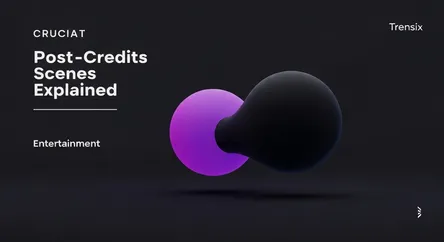Entertainment
Post-Credits Scenes Explained

Discover what post-credits scenes are, why they're a huge trend in blockbuster movies, and how they tease future sequels and cinematic universes.
What is it?
A post-credits scene, also known as a stinger or tag, is a short clip that appears after some or all of the closing credits have finished rolling. Originally used for comedic effect or blooper reels, these scenes have evolved into a significant storytelling device. Their primary function in modern cinema is often to provide a final joke, offer narrative closure, or, most commonly, to hint at or directly set up a sequel or a future installment within a larger cinematic universe. While early examples exist, like in Ferris Bueller's Day Off (1986), the practice has become a blockbuster staple.
Why is it trending?
The popularization of the post-credits scene is largely credited to the Marvel Cinematic Universe (MCU). Beginning with Iron Man in 2008, Marvel Studios consistently used these stingers to connect its individual films, build anticipation for future team-ups like The Avengers, and introduce new characters. This strategy was immensely successful in creating a shared universe and generating sustained audience excitement. Other major franchises saw this success and adopted the technique to build their own interconnected worlds, turning it from a novelty into a standard expectation for major event films.
How does it affect people?
Post-credits scenes have fundamentally changed audience viewing habits, training moviegoers to remain in their seats until the theater lights come up. They foster a community of dedicated fans who actively speculate and dissect the scenes' meanings online, creating organic marketing and buzz long after a film's release. For viewers, it's a reward for their patience and fandom, offering an exclusive glimpse into what's next. It also encourages audiences to sit through the credits, providing a moment of recognition for the hundreds of artists and technicians who worked on the film.